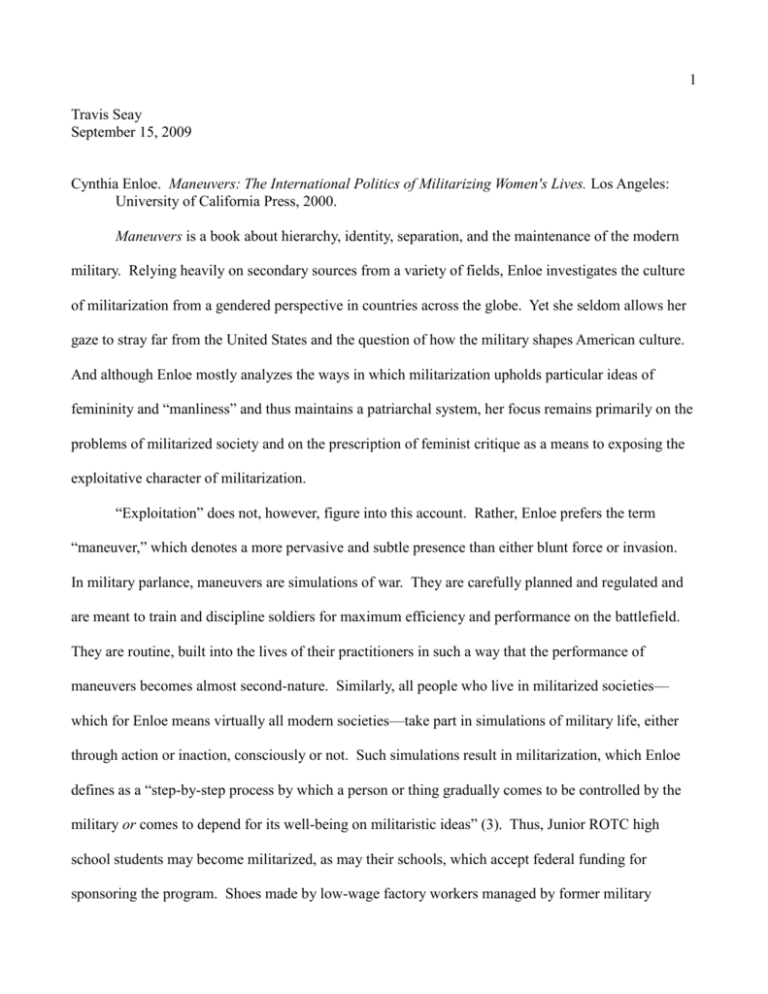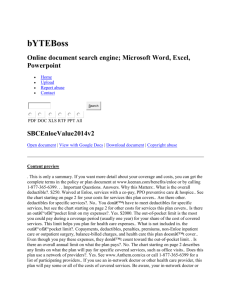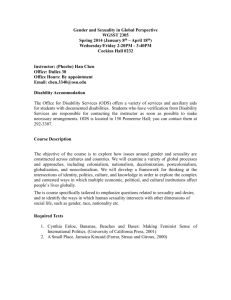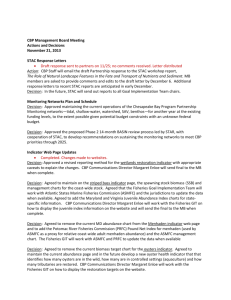Cynthia Enloe, Maneuvers
advertisement

1 Travis Seay September 15, 2009 Cynthia Enloe. Maneuvers: The International Politics of Militarizing Women's Lives. Los Angeles: University of California Press, 2000. Maneuvers is a book about hierarchy, identity, separation, and the maintenance of the modern military. Relying heavily on secondary sources from a variety of fields, Enloe investigates the culture of militarization from a gendered perspective in countries across the globe. Yet she seldom allows her gaze to stray far from the United States and the question of how the military shapes American culture. And although Enloe mostly analyzes the ways in which militarization upholds particular ideas of femininity and “manliness” and thus maintains a patriarchal system, her focus remains primarily on the problems of militarized society and on the prescription of feminist critique as a means to exposing the exploitative character of militarization. “Exploitation” does not, however, figure into this account. Rather, Enloe prefers the term “maneuver,” which denotes a more pervasive and subtle presence than either blunt force or invasion. In military parlance, maneuvers are simulations of war. They are carefully planned and regulated and are meant to train and discipline soldiers for maximum efficiency and performance on the battlefield. They are routine, built into the lives of their practitioners in such a way that the performance of maneuvers becomes almost second-nature. Similarly, all people who live in militarized societies— which for Enloe means virtually all modern societies—take part in simulations of military life, either through action or inaction, consciously or not. Such simulations result in militarization, which Enloe defines as a “step-by-step process by which a person or thing gradually comes to be controlled by the military or comes to depend for its well-being on militaristic ideas” (3). Thus, Junior ROTC high school students may become militarized, as may their schools, which accept federal funding for sponsoring the program. Shoes made by low-wage factory workers managed by former military 2 personnel may be militarized, as may food and toys. Memos that define the traits of a good, supportive military wife maneuver people as do policies mandating medical exams for women who frequent discos patronized by soldiers. States rely on women and the idea of femininity, argues Enloe, for their political legitimacy (36). They also rely on fragmented relationships, particularly among women. The good military wife thus does not consider the relationship of the prostitute or of a lower-ranking soldier's wife to the military as part of the same process of militarization that orders her own life. Enloe cites case after case in which militaries have carefully regulated their relationships with women and defined women's roles. The enslavement of women by the Japanese army during World War II followed a policy designed to achieve strategic military goals. Those goals included minimizing tensions between the Japanese military and civilians by reducing the rape of local women; to manage soldiers' morale; and to minimize soldiers' exposure to sexually-transmitted diseases (81). Lest one conclude that the keeping of “comfort women” by the Japanese army amounted to a modern aberration, or that its lessons remain confined to a moment in history turned upside down by fascism, Enloe discusses the complicity of the postwar American military in concealing Japan's wartime policies on prostitution and even in adapting them to the needs of American soldiers. During the Korean war, the United States developed similar policies for regulating prostitution. Enloe's discussion of the use of rape by American soldiers and by the governments of numerous countries (including Chile, Argentina, the Philippines, Iraq, Israel, India, Haiti, Indonesia, and China) as instruments of both recreation and of national security is poignant. In cases of national security, officials have condoned rape as torture and punishment for deviant behavior. Enloe identifies feminist perspectives as useful in raising consciousness not only about the entrenched patriarchy of militaries but also about the shared experience of militarization during the twentieth century. Her discussion of the state's instruments of national security, especially in the Philippines and Chile, reveal a concern for 3 ordering societies within the states in which soldiers raped women more than for evaluating and combating external threats to security. One recognizes here a parallel to the ordering of ideas about masculinity and femininity, particularly in the context of the American military. Patriarchal institutions and national security—in this sense, the preservation of the state from internal threats—hold together quite well across international cases. One senses too that the degree of coordination and cooperation between militaries (take for example overlapping American and Japanese prostitution policies) implies something important for national security. To what extent do modern militaries seek to preserve order generally rather than exclusively in the interests of their respective states? Enloe also investigates the prospects for successful responses by women, particularly in the United States. In the chapter titled “Filling the Ranks,” Enloe tracks the presence of women in the American military and finds that agency for women soldiers serving in the post-conscription military had increased quite a bit by the 1990s. But she wonders how deep the openness to ideas of women from within the state apparatus actually goes. To what extent can feminists shape military policy? She writes, “[i]f a state, any state, is intrinsically patriarchal, then it would appear rather futile, naïve or maybe downright dangerous for feminists to seek entrance into the state in the hope of defusing its sexist actions from the inside.” (274). In its adaptability, does the state seek now to militarize feminists? Given the history of modern militaries, can the provision of forums in which women from both inside and outside the military define problems of patriarchy be taken as a comforting sign that the time for feminist state policies has arrived? Or should feminists take this relatively recent transition as more evidence that the state overcomes the obstacles to its operation by lessening the forces of its opposition—in this case, by dividing women against themselves—as it has always? Enloe thus inquires into the relationship between increased militarization of women and women's liberation (279). Many possible motivations exist for recruiting greater numbers of female soldiers. They include improving the state's democratic image in its own eyes and internationally; freeing men up 4 from clerical and medical work to enable them to perform more masculine military roles; compensating for the loss of male volunteers when the job market favors young men; and to increase the patriotism of women during war. There is no reason to believe that the state, absent concerted efforts by feminists, will reassess its exercise of power or consider its patriarchal roots. Nor does a sizable female presence in state institutions guarantee that such a discussion will bear fruit. Here Enloe raises the idea of a truly autonomous state: “There is . . . the possibility that patriarchal state elites have initiated something they cannot control” (287). Enloe's use of Virginia Woolf in her conclusion helps to confirm the theme of the cultural embeddedness of the military in modern civilization. Although Woolf apparently believed it was possible for women to detach themselves from processes of militarization, Enloe sees the potential in our time for an almost endless variety of ideas, objects, and people to become militarized; the prospects for detachment do not clearly appear. “What has been militarized can be demilitarized,” she writes. “What has been demilitarized can be remilitarized” (291). Perhaps the most insidious process involves the militarization of those who consciously oppose militaristic processes and powers. The essential message in this study points to the importance of writing military history, particularly modern experiences of the military by civilians and soldiers alike, with a view toward “feminist curiosity.” With the awareness of imbalanced power distribution and patriarchal institutions such a perspective delivers, the study of international politics stands only to gain a more provocative inquiry than has been the case. Then again, how does such an inquiry maintain integrity when we cannot be certain how it might be co-opted and reformulated to suit the state? The central problem remains the question of the state's interests, assuming that it operates as an autonomous or nearly-autonomous entity. What is the role of the questioner vis-à-vis the state in questioning the dual entrenchment of military and patriarchy in modern life? Such questions, although not fully answerable by Enloe's book, nonetheless require a framework and motivation that feminists may be uniquely suited to initiate. 5








